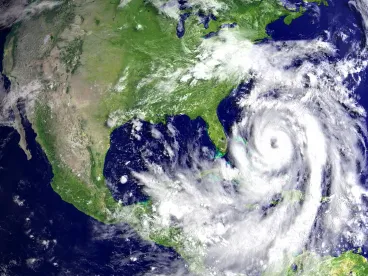On August 21, 2023, Southern California was hit by its first tropical storm since 1997. The remnants of Hurricane Hilary brought record-breaking rainfall and knocked out power for thousands of Californians. This storm follows devastating wildfires in Maui, which killed over 110 people, and hot tub temperatures off the coast of Florida: the ocean reached 101 degrees (it should be just 74-88 degrees). The ocean’s record temperatures may strengthen the severity and prolong the season of this year’s hurricanes, which already plague Florida. According to an Accuweather meteorologist, the warm weathers are “just inviting a big system to hit the state again this year.” His prediction may prove true: Tropical Storm Idalia, expected to strengthen into a major hurricane, is scheduled to hit Tampa on Wednesday.
This summer has been particularly punishing. July 2023 was the hottest month ever recorded on Earth. The East Coast had its taste of a West Coast fire season when smoke from Canada blanketed 32 states. Heat waves in the Southwest caused Phoenix, Arizona to exceed 110 degrees for more than three weeks in a row. Last month, much of Vermont became navigable by kayak following days of severe flooding. And earlier this week, a severe thunderstorm knocked out power from Alabama to New York, with nearly 30 million Americans under a tornado watch. Naturally, thousands of flights were canceled.
Along with being disruptive (and miserable), extreme weather is expensive, with costs creeping higher each year. In 2021 alone, the US experienced 20 separate billion-dollar disasters. Hurricanes, which usually result in an average of $20.5 billion in damages, are increasingly costly: last year’s Hurricane Ian exceeded $112 billion. And these totals are rising. The costs of weather events have increased eightfold from the 1970s to present day.
Part of the problem is that more and more of the country lives in high-risk areas. About 40% of the US population lives on the coast. Americans have been moving to counties at high risk for hurricane-force winds at six times the rate as safer counties. Many of the most at-risk are the wealthiest, including San Francisco, New York City and the Miami area. Concentration of wealth in vulnerable areas spikes the costs of property damage flowing from natural disasters, including because higher-cost homes and personal property (art, for example) are located there.
These risks underscore the importance of offsetting these losses through a robust insurance plan. Insurance can guard against many risks arising out of extreme weather, not just property damage: think bodily injury, debris removal, business interruption, event cancellation and much more. Having a plan to reduce risk well in advance is vital, so that the policyholder can file a claim as quickly as possible following a weather event: notice is often crucial to the success of these claims.
But with so much money at stake, insurers are finding new ways to deny weather-related claims. The Washington Post, for example, found that insurers handling claims for property damage caused by Hurricane Ian paid some policyholders 45-97% less than the value of the claims submitted (ultimately, just over half of Hurricane Ian’s costs were paid by insurance). Of last year’s estimated $313 billion in natural disaster-related damages, insurance covered just a third. Some insurers are simply refusing to issue coverage in high-risk areas, notably in Florida and California. In the long term, large-scale reform of the insurance industry may be necessary to respond to the changing risks of climate change (parametric underwriting is one option).
For now, though, insureds with meritorious claims have a right to recovery. Challenging insurers can be time-consuming and expensive, so many policyholders leave money on the table. They should be prepared to fight tooth and nail to obtain coverage following an extreme weather event. Even more important is a preemptive review of insurance lines to ensure adequate coverage is available when disaster strikes. As costly as property damage can be in the wake of a natural disaster, the toll that can be taken in the form of business interruption can be even greater. Off-the-shelf insurance products may not be well suited to address risks unique to a particular business or geography. The ideal time to address any issue is before disaster strikes—not after an insurer has denied coverage.







 />i
/>i

